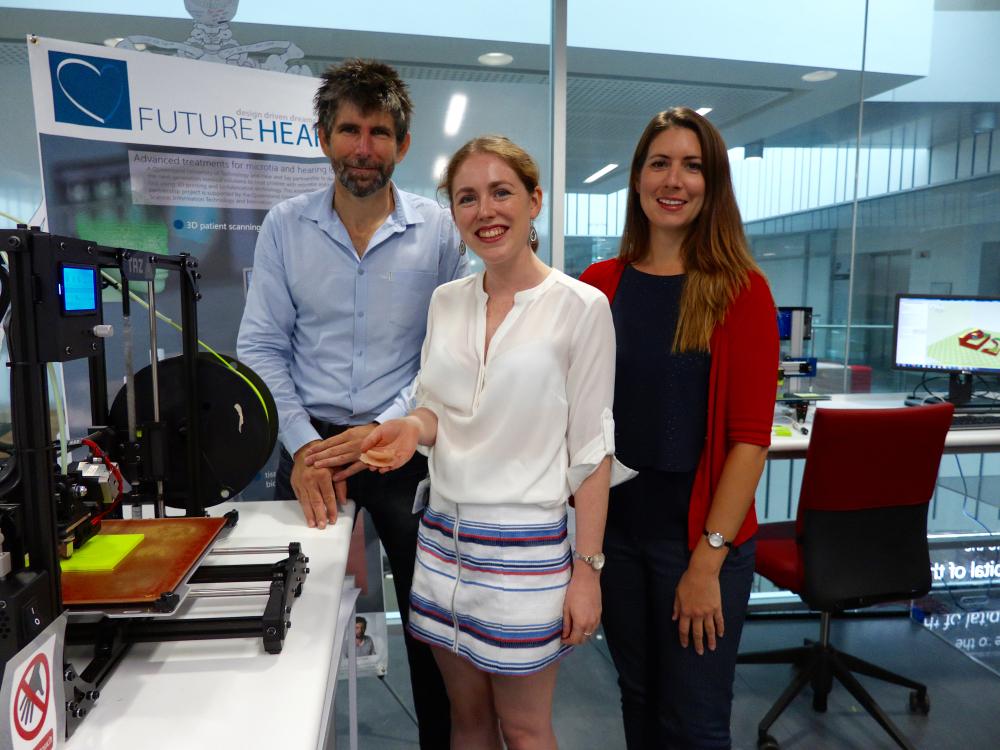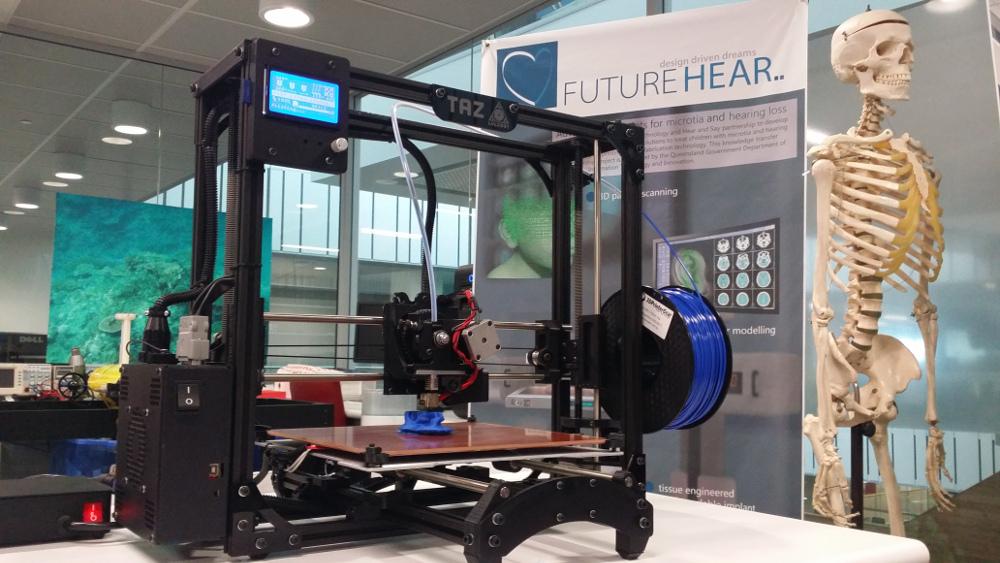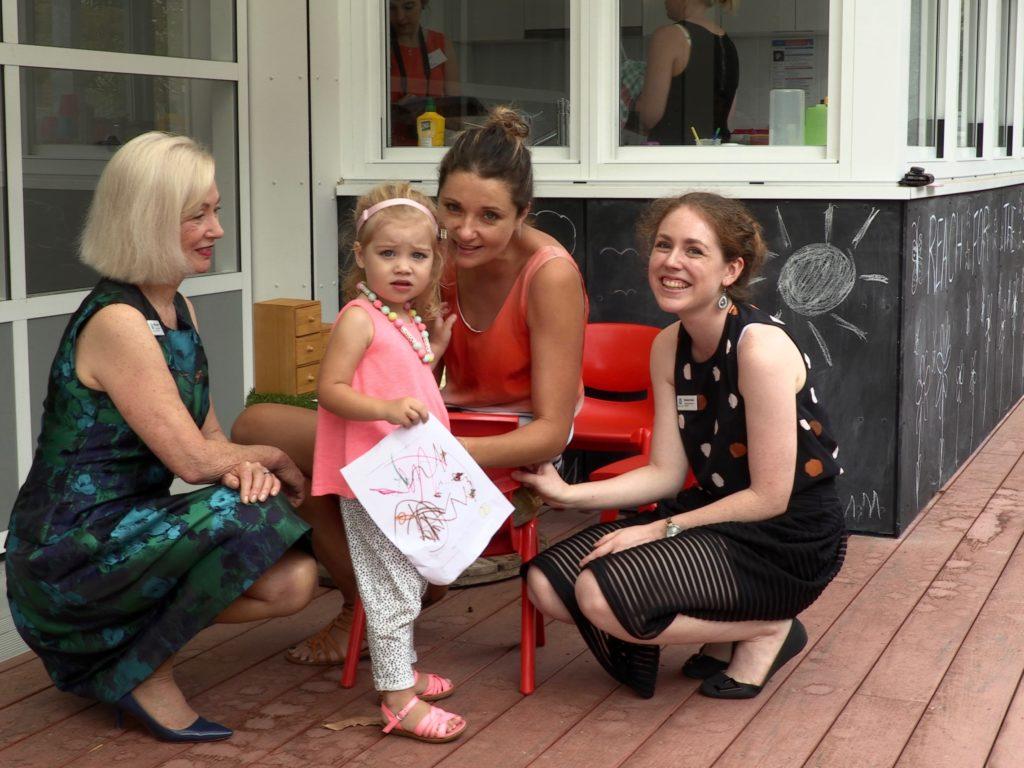 When it comes to determination and resourcefulness, the researchers behind the FutureHear project are a bright and inspiring example of what can be accomplished even in tough circumstances. The project, a collaboration between the Queensland University of Technology and nonprofit Hear and Say, which provides treatments and services for hearing-impaired children, aims to provide 3D printed prosthetic ears for children suffering from microtia, a condition in which the outer ear is underdeveloped or missing.
When it comes to determination and resourcefulness, the researchers behind the FutureHear project are a bright and inspiring example of what can be accomplished even in tough circumstances. The project, a collaboration between the Queensland University of Technology and nonprofit Hear and Say, which provides treatments and services for hearing-impaired children, aims to provide 3D printed prosthetic ears for children suffering from microtia, a condition in which the outer ear is underdeveloped or missing.
While FutureHear represents an important development for the medical world and a source of hope for thousands of children, the Australian government unfortunately doesn’t seem to feel the same way. When we took a look at the project a couple of months ago, the FutureHear team was feeling left out in the cold by the Australian government, which had declined to give them much-needed funding to take their product to the next level.
Instead of giving up, FutureHear turned to crowdfunding instead, launching a fundraising campaign on Pozible in hopes that the general public would prove more understanding and supportive than the government. With three days left in the campaign, the team has raised $26,342 of their $200,000 goal. They’re now hoping to make a major push towards their goal in the last few days of the campaign.
Phase One of the FutureHear project involves fitting children with prosthetic ears, created using LulzBot 3D printers. A photogrammetry scan of the child’s existing ear is taken with a smartphone and used to create a 3D file, which is then 3D printed as a reverse mold. Medical-grade silicone is then poured into the mold to create a prosthetic ear that matches the child’s other ear.
“3D printing allows us to make things personalized,” said Mia Woodruff, an associate professor at Queensland University of Technology. “It’s a technology that everyone’s adopting, and the [LulzBot 3D] printers are just so reliable and low-cost compared to other manufacturing techniques.”
Phase Two of the project will focus on tissue engineering to create real, permanently implantable ears, while Phase Three will work on the incorporation of functional hearing components using 3D printed bioconductive polymer materials.
“FutureHear is about future hearing, and it’s about the future lives of these children to make them have exactly the same opportunities that all the other children have,” Woodruff said.
LulzBot printers are already being used to create the internal cartilage structure of the prosthetic ears from NinjaFlex filament. According to Woodruff, the team has been thrilled with LulzBot overall. Not only are they low-cost, which is vital for a project for which every penny counts, but they’re durable enough to stand up to a lot of use and transport.
“We were looking out for really, really reliable printers that looked good, that had a good reputation, didn’t break, and that were Open Source [Hardware],” Woodruff continued. “The Open Source [Hardware] is the huge plus factor here with the LulzBot 3D printers, so we love how accessible the company is. We take them to a lot of showcase events. We’ve taken them to at least five, and they’ve never malfunctioned, they’re easy to level, and the cost is so incredibly competitive. They are the reasons we stick with it, and we just have such nice interactions with the company.”
You can still donate to FutureHear’s campaign here. While the team is making determined progress with the project and will go forward no matter what, they’re still very much in need of funding for laboratory resources, new materials, and manpower, just to name a few costs. To see the project succeed will be a victory not only for the hardworking team but for children all around the world, as well as for other medical research projects and startups struggling without government funding support.
As for the government, perhaps they will take notice of the good FutureHear plans to do for children such as Maia, whose story you can see in the video below, and rethink their decision. Until then, FutureHear will push forward with the help of a generous public and the opportunities afforded them by 3D printing technology.
“3D printers are amazing,” Woodruff said. “They’re revolutionizing the world; to see how it can be used to have an impact on someone’s health and well-being is quite incredible.”
Discuss in the FutureHear forum at 3DPB.com.
[Source: LulzBot / Images: FutureHear]
Subscribe to Our Email Newsletter
Stay up-to-date on all the latest news from the 3D printing industry and receive information and offers from third party vendors.
You May Also Like
Profiling a Construction 3D Printing Pioneer: US Army Corps of Engineers’ Megan Kreiger
The world of construction 3D printing is still so new that the true experts can probably be counted on two hands. Among them is Megan Kreiger, Portfolio Manager of Additive...
US Army Corps of Engineers Taps Lincoln Electric & Eaton for Largest 3D Printed US Civil Works Part
The Soo Locks sit on the US-Canadian border, enabling maritime travel between Lake Superior and Lake Huron, from which ships can reach the rest of the Great Lakes. Crafts carrying...
Construction 3D Printing CEO Reflects on Being Female in Construction
Natalie Wadley, CEO of ChangeMaker3D, could hear the words of her daughter sitting next to her resounding in her head. “Mum, MUM, you’ve won!” Wadley had just won the prestigious...
1Print to Commercialize 3D Printed Coastal Resilience Solutions
1Print, a company that specializes in deploying additive construction (AC) for infrastructure projects, has entered an agreement with the University of Miami (UM) to accelerate commercialization of the SEAHIVE shoreline...
































